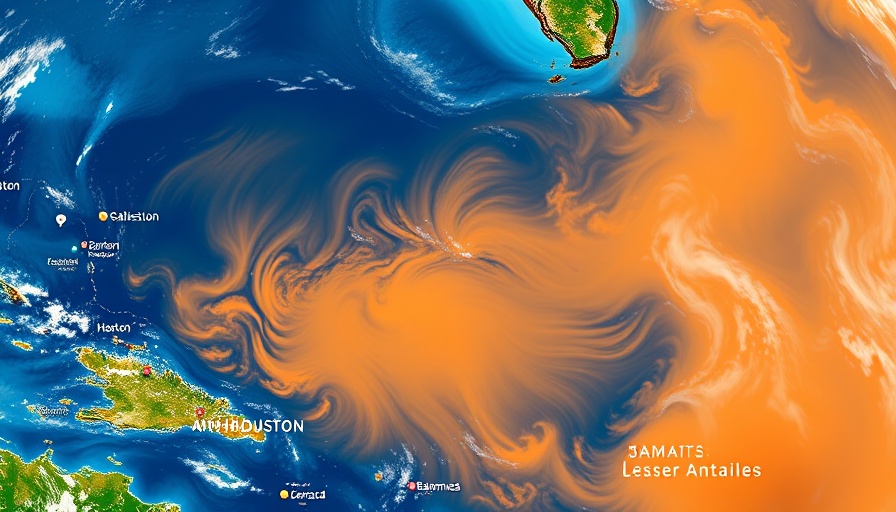
The Rising Threat of Saharan Dust: What You Need to Know
As the weather heats up, it appears that a familiar foe—the Saharan dust—could make its way into the forecast later this week. This seasonal phenomenon, notorious for clouding skies and impacting air quality, has potential ramifications for both health and weather patterns across the U.S.
Unpacking Saharan Dust: Historical Context and Background
Saharan dust originates from the deserts of North Africa, where strong winds pick up tiny particles and carry them thousands of miles across the Atlantic Ocean. This phenomenon is not new. Each year, particularly during summer months, dust plumes from the Sahara have been known to reach the Caribbean and even make their way to the southeastern U.S.
Historically, the presence of Saharan dust has been associated with both beneficial and harmful effects. While these dust clouds can suppress hurricane activity by disrupting storm formation in the Atlantic, they also contain particles that can exacerbate respiratory issues and lead to air quality alerts.
Health Impacts: Who is at Risk?
The looming return of Saharan dust raises concerns, particularly for vulnerable groups such as the elderly, children, and those with pre-existing respiratory conditions like asthma or chronic obstructive pulmonary disease (COPD). Fine dust particles can irritate eyes and airways, causing symptoms ranging from mild discomfort to serious health issues.
According to health experts, it's essential for individuals in affected areas to stay informed about air quality reports as the dust clouds approach. For those who experience respiratory issues, reducing outdoor activity on days with higher dust concentration can mitigate risks. Additionally, using air filtration systems indoors can help maintain cleaner air.
The Science of Weather Forecasting Amid Saharan Dust
Weather forecasting becomes particularly challenging during events of high dust concentration. Meteorologists indicate that dust can affect weather models, influencing rainfall predictions and even altering temperature patterns. The dust not only coats the atmosphere but can also interact with moisture, affecting cloud formation and precipitation.
In some cases, forecasters may need to consider dust in their models to ensure accuracy, leading to adjustments in local forecasts. As such, if you’re planning activities this week, keeping a close eye on updated weather reports will be crucial to avoid surprises.
Cultural and Social Implications
Beyond individual health impacts, the Saharan dust phenomenon sparks social discussions around climate change and its effects on health. With recent conversations focusing on environmental sustainability, awareness about such ecological issues has grown.
Local communities can foster dialogue about protective measures and climate resilience, strengthening networks for support and information sharing. Awareness campaigns emphasizing the importance of air quality and public health can empower individuals to take proactive steps.
Moving Forward: Preparing for Saharan Dust
As the potential return of Saharan dust looms, preparations can make a significant difference. Here are a few actionable steps:
- Stay informed about weather and air quality updates.
- Limit outdoor activities when dust levels are high.
- Invest in air purifiers or seek shelter in dust-free zones when necessary.
Mindful practices can mitigate the effects of dust on your health and daily life, ensuring that you stay safe while enjoying the summer season.
Encouraging Community Awareness and Engagement
Every resident plays a part in responding to the Saharan dust issue. By sharing experiences and information through social channels, local news, and community meetings, individuals can enhance collective awareness and preparedness. This tight-knit community approach fosters resilience against environmental challenges.
Conclusion: Stay Informed and Safe
As we anticipate the possible return of Saharan dust, understanding its implications for health and the environment becomes essential. Remaining informed will empower you to make better decisions and safeguard your well-being. For resources and updates on air quality as events unfold this week, be sure to follow local news outlets and engage with health professionals.
Act now to educate yourself and others in your community—sharing knowledge is a vital step toward fostering a healthier environment.
 Add Element
Add Element  Add Row
Add Row 



Write A Comment